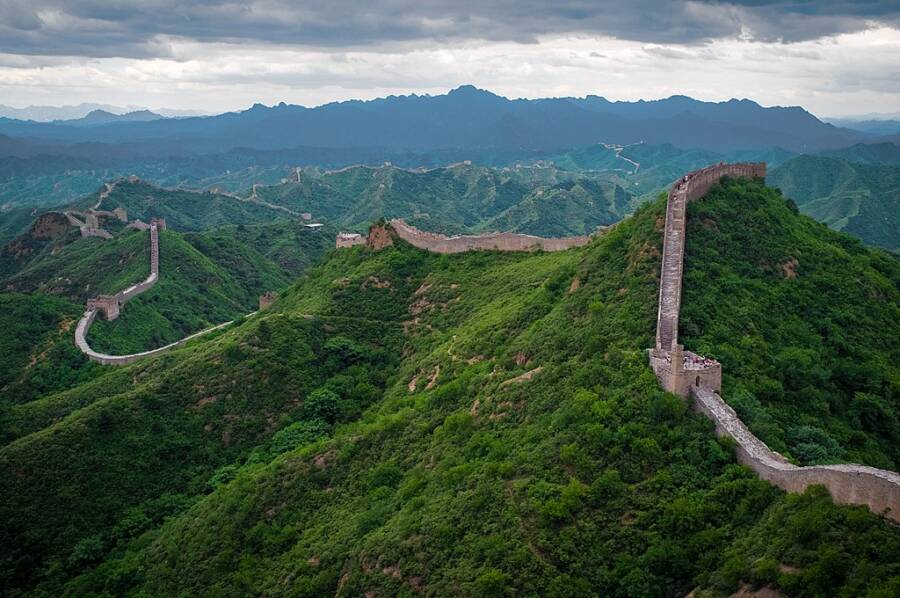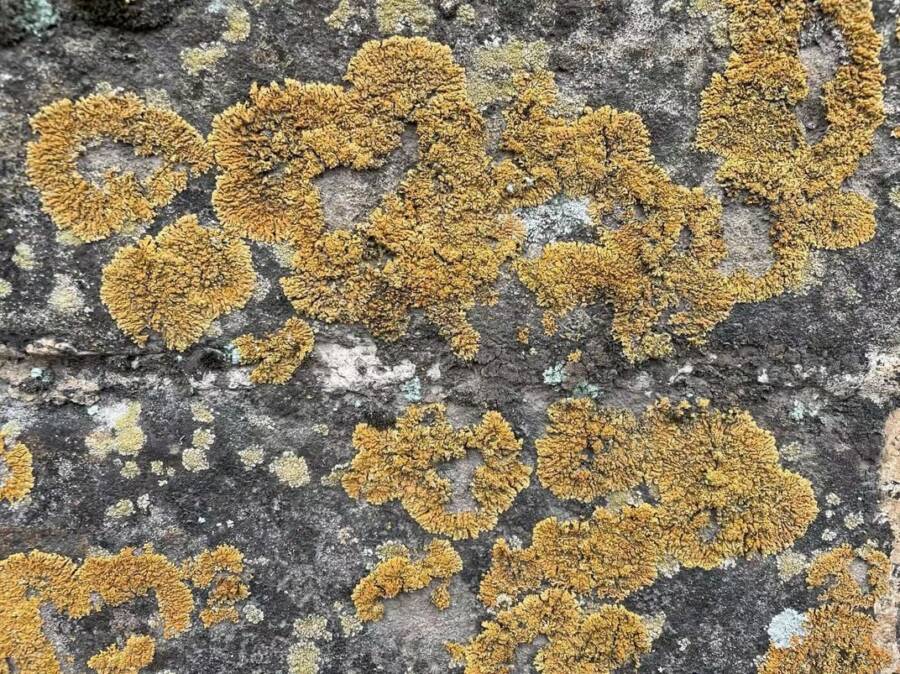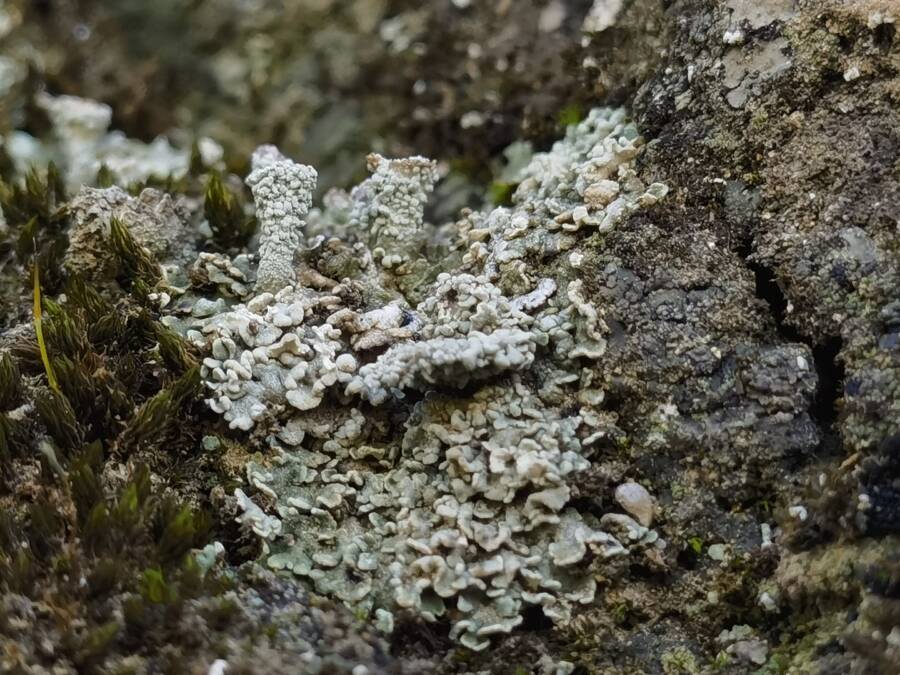Made up of moss and lichen, this biocrust has proven critical in protecting large sections of the Great Wall from the destructive forces of wind and rain.

Wikimedia CommonsThough its most famous sections are made of stone, vast portions of the Great Wall of China were simply made from compacted soil known as “rammed earth” — and these pieces of the wall have remained three times stronger in areas where they’re covered in a biocrust made of moss and lichen.
Experts have long feared that the iconic Great Wall of China would eventually fall victim to the destructive forces of erosion. Though this imposing defensive fortification along what was once China’s northern border stretches some 13,000 miles and dates back as far as 2,200 years, it’s certainly not immune to natural decay.
Now, however, researchers have discovered that parts of the wall are well protected from erosion due to a thin layer, just a few centimeters thick, of what’s known as biocrust. Made up of cyanobacteria, moss, and lichen, these biocrusts significantly reduce the damage from wind and rain that have been slowly whittling away at the wall for centuries.

Bo XiaoKnown as a biocrust or a “living skin,” the thin layer of moss, lichen, and other microorganisms that covers the Great Wall of China has proven integral in keeping it so well preserved for the last 400-700 years.
Part of the reason the wall is so vulnerable to erosion is that large sections of it were created using rammed earth, which consists of compacted organic materials like soil and gravel.
“As an emblematic rammed earth structure, the Great Wall is highly vulnerable to wind erosion, rainfall scouring, salinization, and freeze-thaw cycles, leading to severe issues such as cracking, disintegration, and even eventual collapse,” scientists wrote in a study published in Science Advances.
At the same time, these natural materials provide the perfect environment for living organisms, including ones like the biocrust that helps naturally protect the wall.
The reason that these cyanobacteria and other microorganisms help fortify the structure is that they secrete substances like polymers that act as natural binders for the organic material, essentially functioning like cement.
“These cementitious substances, biological filaments and soil aggregates within the biocrust layer finally form a cohesive network with strong mechanical strength and stability against external erosion,” said study co-author Bo Xiao in an interview with Live Science.

Bo XiaoThis “living skin” has proven so effective that scientists are now hoping to propagate more of it in order to protect the wall from further decay.
Scientists tested the capabilities of the biocrusts to protect the wall by comparing samples from the biocrust-covered sections against the bare sections. In the roughly 300-mile-long section of the wall they examined, they found 67 percent of the wall was covered with biocrusts. Scientists then determined that the biocrust-covered sections showed notable reductions in porosity and erodibility and large increases in strength and stability.
“Compared with bare rammed earth, the biocrust-covered sections exhibited reduced porosity, water-holding capacity, erodibility, and salinity by 2 to 48%, while increasing compressive strength, penetration resistance, shear strength, and aggregate stability by 37 to 321%,” according to the study.

Bo XiaoThis “living cover” made of various microorganisms has protected the stone and earth used to build the newer sections of the Great Wall from wind, rain, and other forces of erosion for centuries.
The study also notes that just 5.8 percent of the entirety of the Great Wall remains well-preserved, while 52.4 percent has either completely or severely deteriorated.
But the discovery of the biocrust and the sheer strength of the protective layer, which measures only a few centimeters deep on the soil surface but offers strong protection against the elements, gives scientists and historians some hope.
While previous research had suggested that biocrusts contributed to the deterioration of historic structures, this new study proves that is not always the case. In fact, it might be the only thing preventing the total collapse of one of the world’s most famous structures.
Next, learn more about why the Great Wall of China was built. Then, read the story of Qin Shi Huang, the emperor largely credited with setting the Great Wall project in motion.





